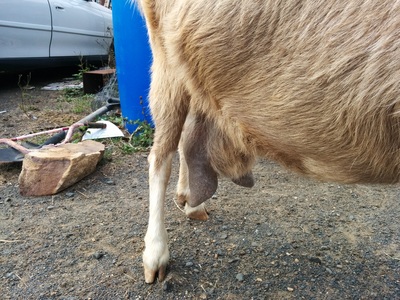
This doe went on to have 3 very healthy kids, two does and a buck. The buckling (Mr Snuggles) was weaned at 4 months of age and went to stud in Northern Territory with 70 does! His new owner informed us that almost all of his progeny looked like pure Toggies (as Mr Snuggles was pure Toggie, registered and pedigreed). In a subsequent pregnancy, the doe again came down with mastitis and was treated with antibiotics both by a series of injections which we administered in the neck for 6 days, according to the vet's directions and also suppositories into the teats. Sadly the mastitis lumps were recurring and the infection was not able to be removed. The doe is now being assessed by university vets for suitability for complete mastectomy. This doe is a very special pet and it is very expensive to have the operation completed and there is risk of the doe going into shock under the anaesthetic, which would be tragic. Check this page for updates.







 RSS Feed
RSS Feed